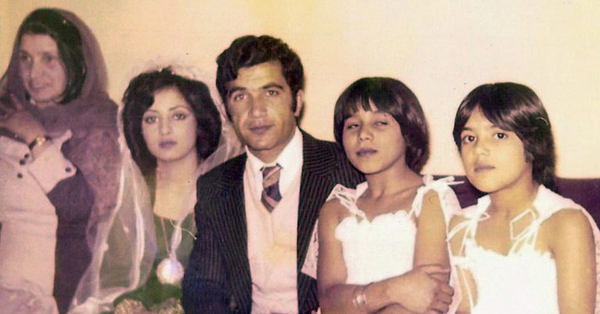The mystery of Ukraine’s Azovstal ‘fortress’: From the steel mill to the last barricade
The Azovstal Steel Plant (in the city of Mariupol) has become a symbol of the fighting spirit of Ukrainian forces to the end against the Russian army in a potentially protracted and increasingly unpredictable conflict.
 |
Azovstal factory seen from afar on May 12 reuters |
For Russia, Mariupol is of particular importance. The port city on the Azov coast is seen as a bridge between the Donbass region in eastern Ukraine, controlled by pro-Russian separatists, and the Crimean peninsula, which Russia annexed in 2014.
As a result, taking control of the city became one of Russia’s top goals in the “Operation military” in Ukraine. But throughout the weeks, even though Ukrainian soldiers gradually lost Mariupol, Russia still could not control Azovstal steel plantwhich is considered the “last bastion” in the city.
The Last Fort and the ultimatums
Mariupol had been a key battleground for weeks, and by April 15, Russia had established a tight encirclement of the city. This situation forced about 500 soldiers in the Ukrainian forces still standing here to withdraw to entrench at the Azovstal factory, because their ammunition was running out. The Russians then claimed that the entire metropolitan area of Mariupol was under their control and that Ukrainian forces remained in Azovstal.
On April 21, Russian Defense Minister Sergei Shoigu claimed to have “liberated” the city of Mariupol, but there are still about 2,000 Ukrainian soldiers entrenched in Azovstal and it is estimated that it takes 3-4 more days to complete the task. On the same day, Russian President Vladimir Putin ordered Russian forces not to storm the Azovstal plant because of the risk of loss of force. Instead, he wants the factory to be completely sealed off so that “not a single fly can get through”.
Mr. Putin also called on Ukrainian troops in Azovstal to surrender and pledged that they would be treated with respect, even if this was not the case. ultimatum First from Russia. From April 17 to 21, the Russian military issued three ultimatums asking Ukrainian forces in Azovstal to surrender, but never succeeded. Ukrainian soldiers ignored calls to give up their weapons.
In the days that followed, Kyiv said Russian troops repeatedly attacked the Azovstal factory. “The enemy is trying to stifle the last resistance of the defenders of Mariupol at the Azovstal plant,” said an adviser to Ukrainian President Volodymyr Zelensky.
During the night of April 27-28, Russian Tu-22M3, Su-25 and Su-24 aircraft made 50 attacks on the plant, according to the Ukrainian side, although these claims cannot be independently verified. create.
 |
Pro-Russian forces during a bombardment near the Azovstal . plant reuters |
Efforts to evacuate civilians
According to Metinvest, which owns Azovstal, the plant’s system of tunnels and fortifications is designed to transport equipment between buildings, not for military use. But workers have been taking shelter in the factory’s basements since 2014, when separatists in eastern Ukraine tried to take Mariupol.
More than 2,000 civilians have been holed up at the factory since the start of the war, and many of them are family members of employees. By April 18, Mariupol city council estimated that no less than 1,000 civilians were trapped here. Ukraine has repeatedly accused Russia of obstructing evacuation efforts, while Moscow has accused Kyiv of deliberately delaying it for personal reasons.
On April 30, the United Nations and the International Committee of the Red Cross began evacuating people in Azovstal through humanitarian corridors after much negotiation. The humanitarian corridor was set up following a visit to Moscow by UN Secretary-General Antonio Guterres last week. The first 20 Ukrainian civilians left the factory that day, although the Russian side said it was 25.
Negotiations are still going on for a possible evacuation of the entire population. On May 2, the humanitarian corridor removed about 100 civilians from the Azovstal plant, while Russian forces were said to be gradually withdrawing from Mariupol. But on May 3, Ukraine said that Russian troops had entered the area inside the factory after new attacks. Even so, the evacuation process continued, with 300 people on May 5 and 500 people on May 6.
On May 8, both Russia and Ukraine announced that the evacuation of civilians in Azovstal had been completed, with the last 40 being taken to the Ukrainian-controlled Zaporizhzhya region. Mariupol authorities also said that three Ukrainian soldiers were killed and six others injured in the process.
“The humanitarian convoy is a life-changing moment and a great salvation for those who have endured the horrors of the approaching war for so many weeks. They have endured the horrors of their lives. that no human being has to go through,” said Pascal Hundt, head of the delegation of the International Committee of the Red Cross in Ukraine.
 |
People were evacuated from the Azovstal factory on May 6 reuters |
What future for Azovstal?
However, Ukrainian soldiers still in Azovstal vowed not to leave “as long as we live to drive out the Russians”, according to Azov Regiment deputy commander Sviatoslav Palamar. “We don’t have much time, we are under heavy shelling,” he said.
President Zelensky pledged to continue “extremely difficult but important” efforts to evacuate all who remained at the Azovstal plant in the “second phase of this mission”. According to Ukraine’s Deputy Prime Minister Iryna Vereshchukho, Kyiv is calling on all international organizations to put pressure on Russia to be able to evacuate the seriously wounded, medical and non-combat forces, according to the Geneva Convention.
“There has to be agreements and guarantees that Russia doesn’t open fire,” Vereshchukho said. “We need written assurances. That’s what we’re working to get right now.” She also said that “Turkey is ready” to assist with the sea evacuation from Azovstal, and this process could take about a week.
Russian Deputy Prime Minister Marat Khusnullin announced that he visited Mariupol as well as several other cities of Ukraine on May 8. Khusnullin is the highest-ranking Russian official to set foot in Ukraine since hostilities broke out. During the visit, he said “the process of restoring peace to life has begun” in these areas.
Meanwhile, Denis Pushilin, the leader of the self-proclaimed “Donetsk People’s Republic”, recently said he plans to turn Mariupol into a “resort town”, according to the TASS news agency. He organized a military parade in Mariupol to celebrate Russia’s victory over fascism on May 9.
“Russia is here forever, and you are finally at home… If Azovstal is not restored, then we will turn Mariupol into a resort town,” Mr. Pushilin said, adding that the factory steel “negatively affects the ecology of the city and coastal waters”.
According to Ukrainian estimates, about 1,000 of its soldiers are still entrenched in the factory. Another commander of the force here on May 8 said at this time they “can only hope for a miracle”.
“Pain, torment, hunger, thirst, misery, tears, fear, death. It’s all real in Azovstal,” Serhiy Volinski, commander of the 36th Marine Brigade, said in a memo. letters. He attached a photo showing him unshaven, with blurred vision and what appeared to be an injured nose.
at Blogtuan.info – Source: thanhnien.vn – Read the original article here



